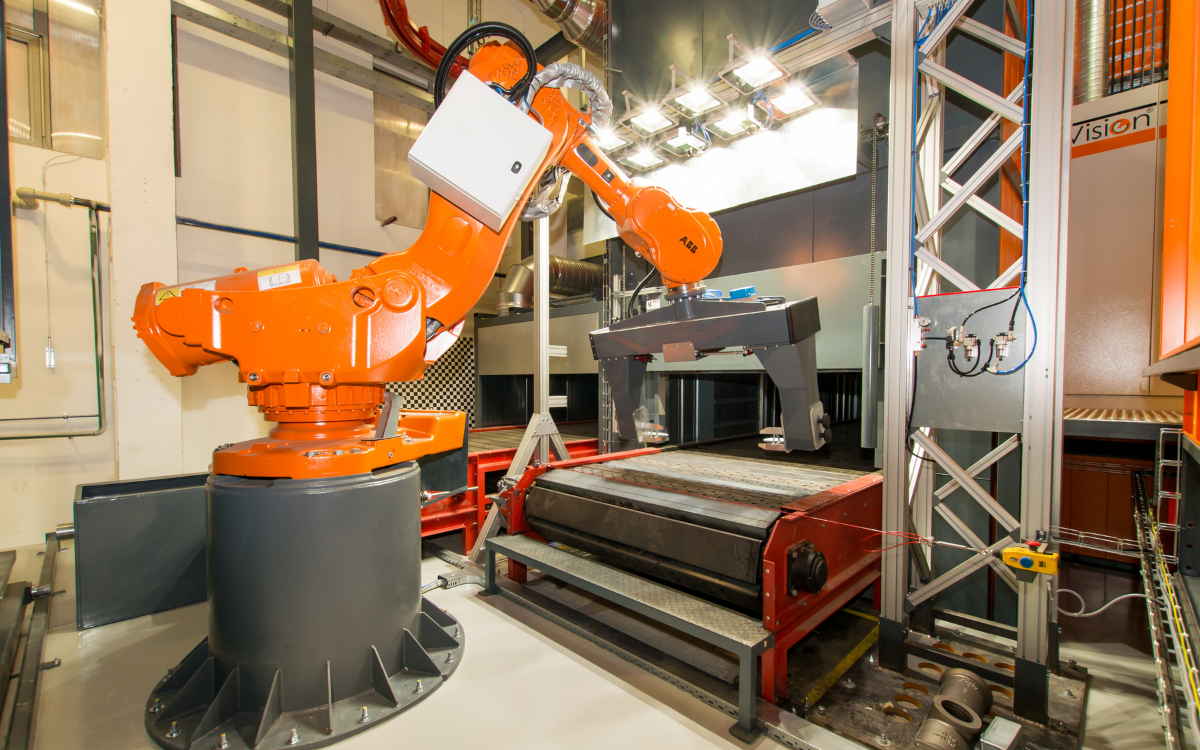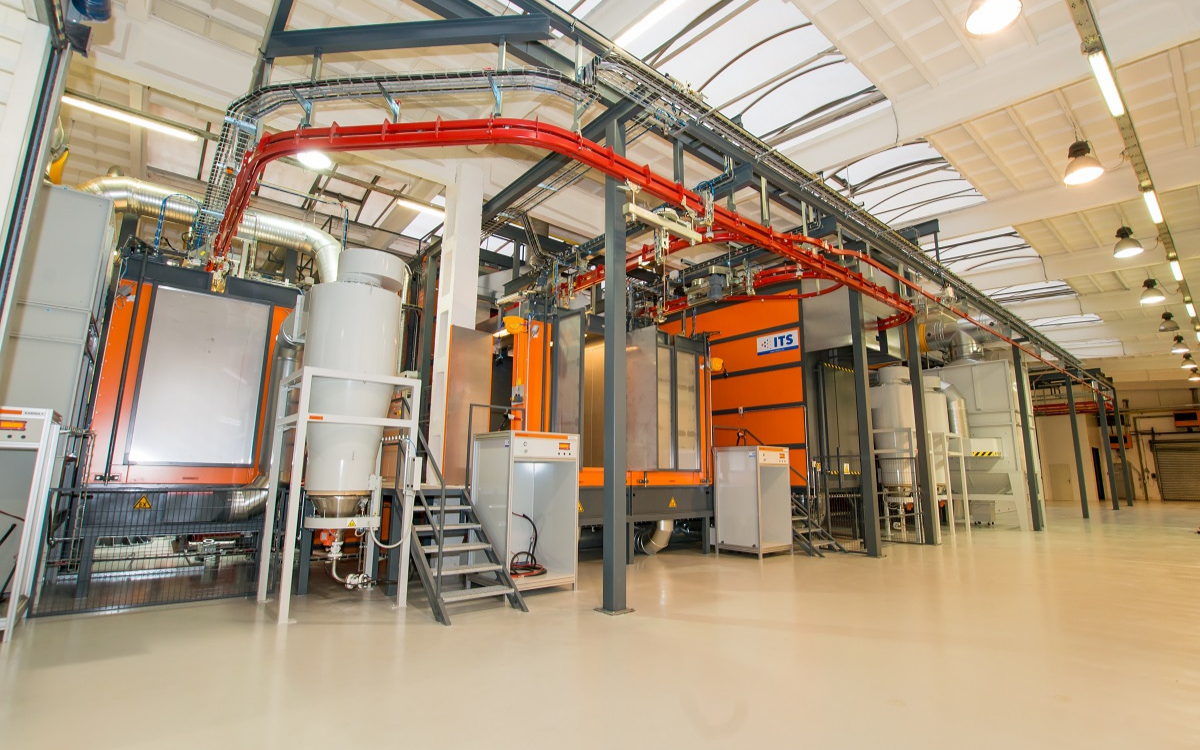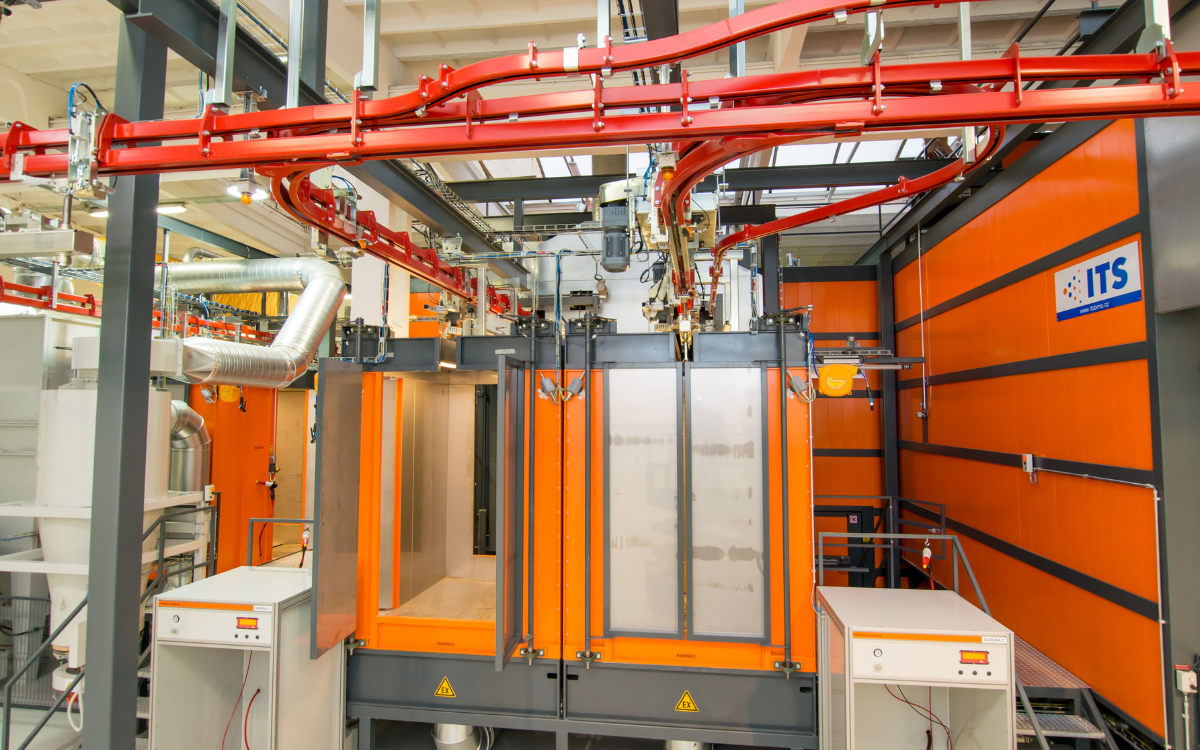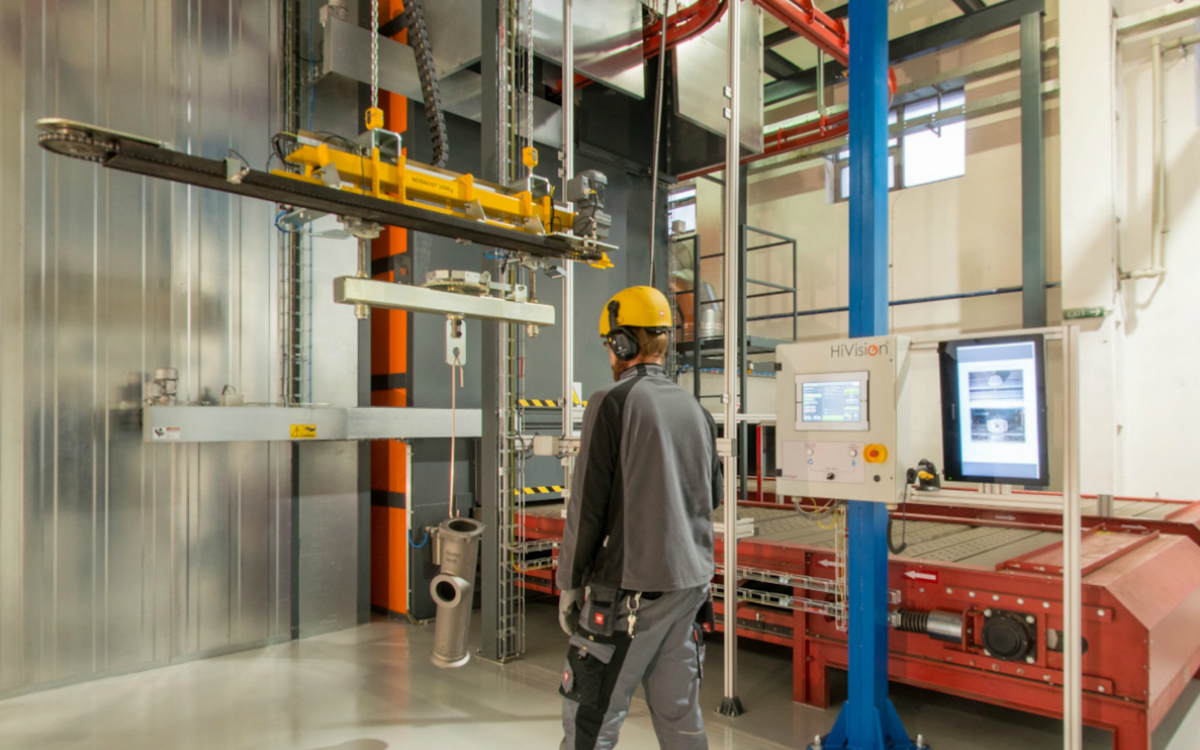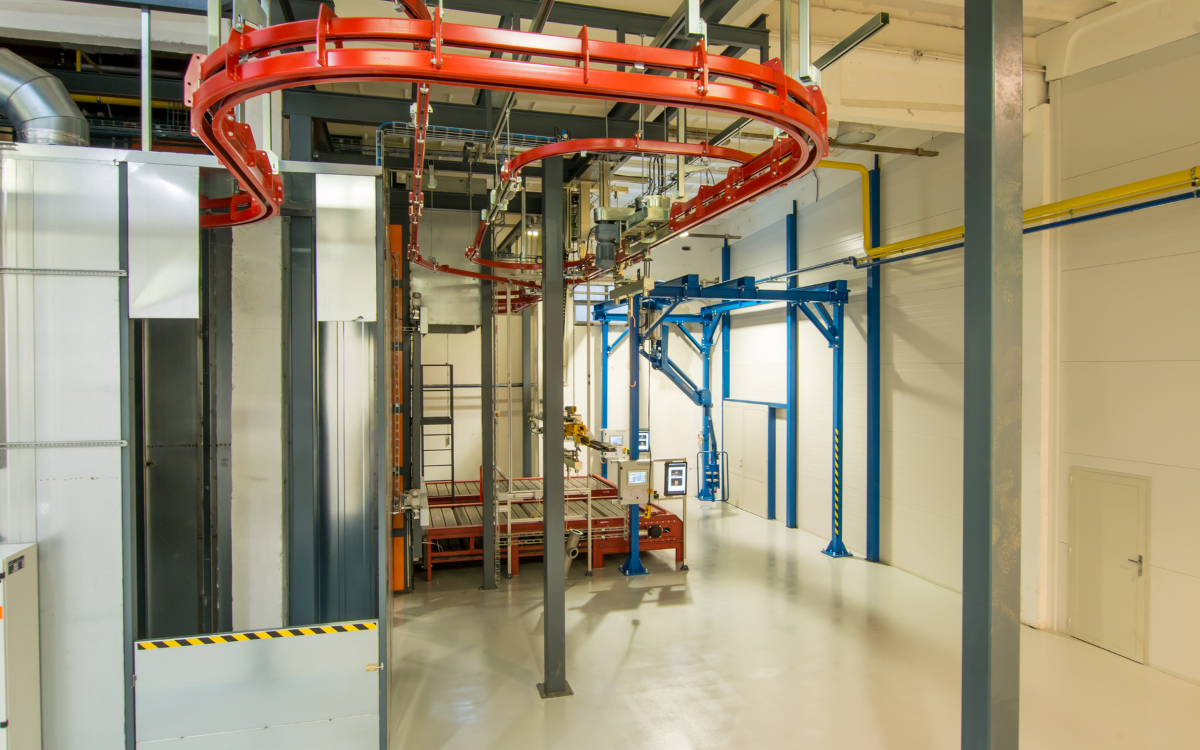A domestic manufacturer of fittings, valves and gates has been struggling for a long time with the problem of how to effectively coat valves.
Coating with epoxy powder paint
The valves need a thick layer of epoxy powder coating, while they also require a transparent layer of polyester paint to ensure UV resistance. Until now, coating has been done separately: The epoxy layer was applied in the fluidised bed, then the paint was fired, and the polyester paint was applied in the coating booth. This manufacturing process takes a long time and requires manual handling of the product.
Firing of epoxy and polyester paint
We designed a new coating facility with an emphasis on automatic handling of the part and firing of epoxy and polyester paint in one step. The design of the coating facility was accompanied by simulations and tests of handling theproduct with a weight of 140 kg.
How it looks in practice
In real operation, theproduction cycle and part handling are as follows:
- loading the product using a manipulator,
- heating up the product,
- recognition of the heated part on the floor conveyor using a camera,
- removal of the product by a robot.
The robot immerses the product in a fluidised bed and then it automatically hangs the product on a suspension conveyor that transports the product to a manual booth for coating. After coating, the product is fed into a firing furnace, in which both powder paints cure. After cooling, the product is again suspended by a handling device.
This automatic operation complies with GSK certification requirements for drinking water products.
